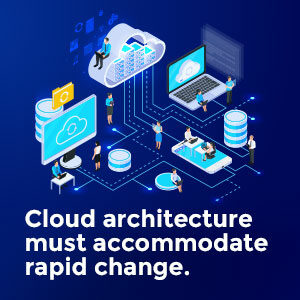
Cloud computing service, cloud services, IT solutions company
Many people assume that cloud computing services automatically offer the benefits of cost optimization and agility. But the cloud is not an automatic panacea. Instead, businesses must have systems built to accommodate rapid change to realize those benefits.
This is just as difficult as upgrading legacy systems. However, a business will die by a thousand cuts without these features. Examples of disruptive technologies are ride-sharing, home-sharing, and entertainment. Read on to learn how to incorporate these features into your cloud architecture.
When designing a technology architecture, it is crucial to understand stakeholder concerns and address them. While the architect’s primary concern is to achieve an optimal balance between flexibility, efficiency, and reliability, he must also consider the business requirements. In this way, he can provide a roadmap for implementation that is appropriate for the enterprise. However, it is important to maintain stakeholder confidentiality. To achieve this, the technology architecture must be able to accommodate rapid change.
Stakeholder feedback is a critical part of the technology architecture process. The document should capture the perspectives of the stakeholder community and route it to the right stakeholders for input. Developing a highly relevant architecture to stakeholder concerns will help the team ensure that it addresses stakeholder concerns and accommodates rapid change.
You can do so with the help of Databytes Consulting, an IT solutions company specializing in IT infrastructure needs for businesses. Further, the architecture should capture the transformation opportunities offered by new technologies. In this way, the entire process can be optimized.
Cloud services begin with data center hardware. These include servers, storage, networking, and other components. If you have specialized workloads, data center hardware may include accelerators. The virtualization layer on top of the physical hardware allows you to optimize its utilization and can run individual VMs, each with its own operating system. By using virtualization, you can take advantage of data center hardware for more than just cloud computing.
Modern cloud data centers are scalable, on-demand, and transparently priced. Scaling traditional data centers involves new planning, costs, and challenges. Cloud resources scale automatically and in real-time, meaning that as the data volume grows, your cloud infrastructure will too. And because big data is becoming more complex and new sources are discovered every day, cloud hardware is essential for future-proofing your applications.
The applications and services layer plays an important role in a modern cloud computing environment. They provide the user interface and coordinate with available back-end resources. Rapid changes can make this layer essential for your cloud architecture. A good back-end architecture must accommodate these changes. However, not all back-end services are created equal. You should be aware of the potential issues involved before implementing cloud services.
For example, a utility-services company transitioning to a cloud-based architecture developed a cloud-based data platform that holds a number of microservices for billing and adding new properties to an account. These microservices are designed to enable the company to quickly deploy self-service capabilities and deliver large amounts of real-time data to its customers. In addition, by separating the application layer and its components, the company was able to avoid on-premise legacy systems that cost money.
While most people think outside hackers are the biggest threat to cloud security, employees can be equally as big of a threat. Not only are employees vulnerable to outside threats, but they may also unintentionally access company data and sensitive documents. The following are some examples of security threats that cloud services should be aware of. To prevent a breach of security, cloud providers should make all of their infrastructure and application software secure from malicious insiders.
The cloud is an open system with a largely unsafe infrastructure. It opens the door for hackers to collect and analyze data without the user’s permission. This leads to unforeseen inferences, which may include future events and invasion of privacy. Cloud users must protect personal data stored on mobile devices and from careless use of login credentials. Also, because cloud services are often stored in different countries, security and privacy measures may differ from country to country.
With several of the factors mentioned above requiring cloud architecture to be accommodating enough, companies need to ramp their architecture. We, at Databytes Consulting, provide your business with the right solutions to match your cloud services.
We offer cloud computing services such as Cloud Telephony, Office 365, Zoom Meetings, Google Workspace, and much more. Now, your business’s cloud architecture will always be prepared for any change in the future. Enquire now about our cloud services, and we will guide you towards the best possible solution tailored for your business.
Contact us